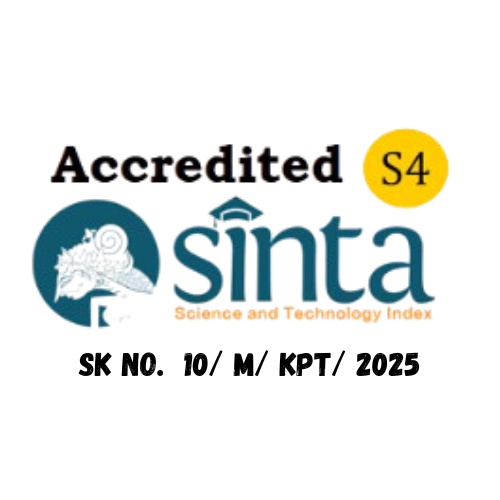Design of a Corn Grinding Machine Using the Axiomatic House of Quality Method (AHOQ)
Abstract
The high production yield in the agricultural sector is undoubtedly related to the processing of agricultural products. Currently, the community in Sinarsabungan Village still prefers selling whole corn instead of corn flour, including the Sinta Uli Farmers' Group. However, in general, corn flour is more expensive than whole corn because it is more nutritious and used for direct consumption or as a higher-quality raw material for animal feed. Therefore, a milling machine is needed to facilitate the farmer group members in corn milling. Subsequently, data collection in the form of the voice of the customer was conducted through observations, interviews, and questionnaire surveys. Through this research, a corn milling machine was designed using the Axiomatic House of Quality (AHOQ) method, which can be used by the farmer group as an appropriate technology in the agricultural sector. The design parameters were obtained from the AHOQ mapping, which included using sieves with fineness levels of 40 mesh, 80 mesh, and 100 mesh. The machine was driven by a 6.5 hp gasoline-powered engine with a shaft rotation of 3250 rpm and utilized a drive wheel. Subsequently, the design was created using Solidworks software. The resulting design was then developed into a product and subjected to testing. The results showed that the milling machine was capable of producing a milling capacity of up to 70,092 kg/hour, and the milling output met customer requirements. The equipment was constructed using iron material with a weight of 60 kg.
References
Adiputra, R., 2020. Evaluasi Penanganan Pasca Panen Yang Baik Pada Jagung (Zea Mays L). Agro Wiralodra, 3(1), pp. 23-28.
Ambarsari, I., Anomsari, S. D., & Oktaningrum, G. N., 2015. Tepung Jagung Pembuatan Dan Pemanfaatannya. BPTP Jawa Tengah, 53(9), pp. 19-20.
Andriani, D. P., Choiri, M., & Desrianto, F. B., 2018. Redesain Produk Berfokus Pada Customer Requirements Dengan Integrasi Axiomatic Design Dan House Of Quality. Jurnal Ilmiah Teknik Industri, 17(1), pp. 71-81.
Ayoub, M. M., 1973.. Work Place Design And Posture. Human Factors, 15(3), pp. 265-268.
Dian Putra, M., Pambudi Tama, I., & Puspita Andriani, D., 2016. Analisis Perancangan Alat Bantu Material Handling Produksi Genteng Menggunakan Metode Axiomatic House Of Quality (AHOQ). Journal Of Engineering And Management Industial System, 4(1), pp. 19-30.
Nur, R., & Suyuti, M. A., 2018. Perancangan Mesin-Mesin Industri. Yogyakarta : Deepublish.
Ruauw, E., Katiandagho, T. M., & Suwardi, P. A. P., 2012. Analisis Keuntungan Dan Nilai Tambah Agroindustri Manisan Pala Ud Putri Di Kota Bitung. Jurnal Ilmiah Sosial Ekonomi Pertanian, 8(1), pp. 31-42.
Weku, H. S., Poekoel, E. V. C., Robot, R. F., & Eng, M., 2015. Rancang Bangun Alat Pemberi Pakan Ikan Otomatis Berbasis Mikrokontroler. E-Journal Teknik Elektro Dan Komputer, 5(7), pp. 54-64.
Widyanugraha, A., Santosa, A., & Santoso, D. T., 2020. Perancangan Mesin Penggiling Padi dan Penepung Sekam Padi Skala Rumah Tangga. JURNAL Teknik Mesin, 13(2), pp. 69-75.

This work is licensed under a Creative Commons Attribution-NonCommercial-ShareAlike 4.0 International License.













